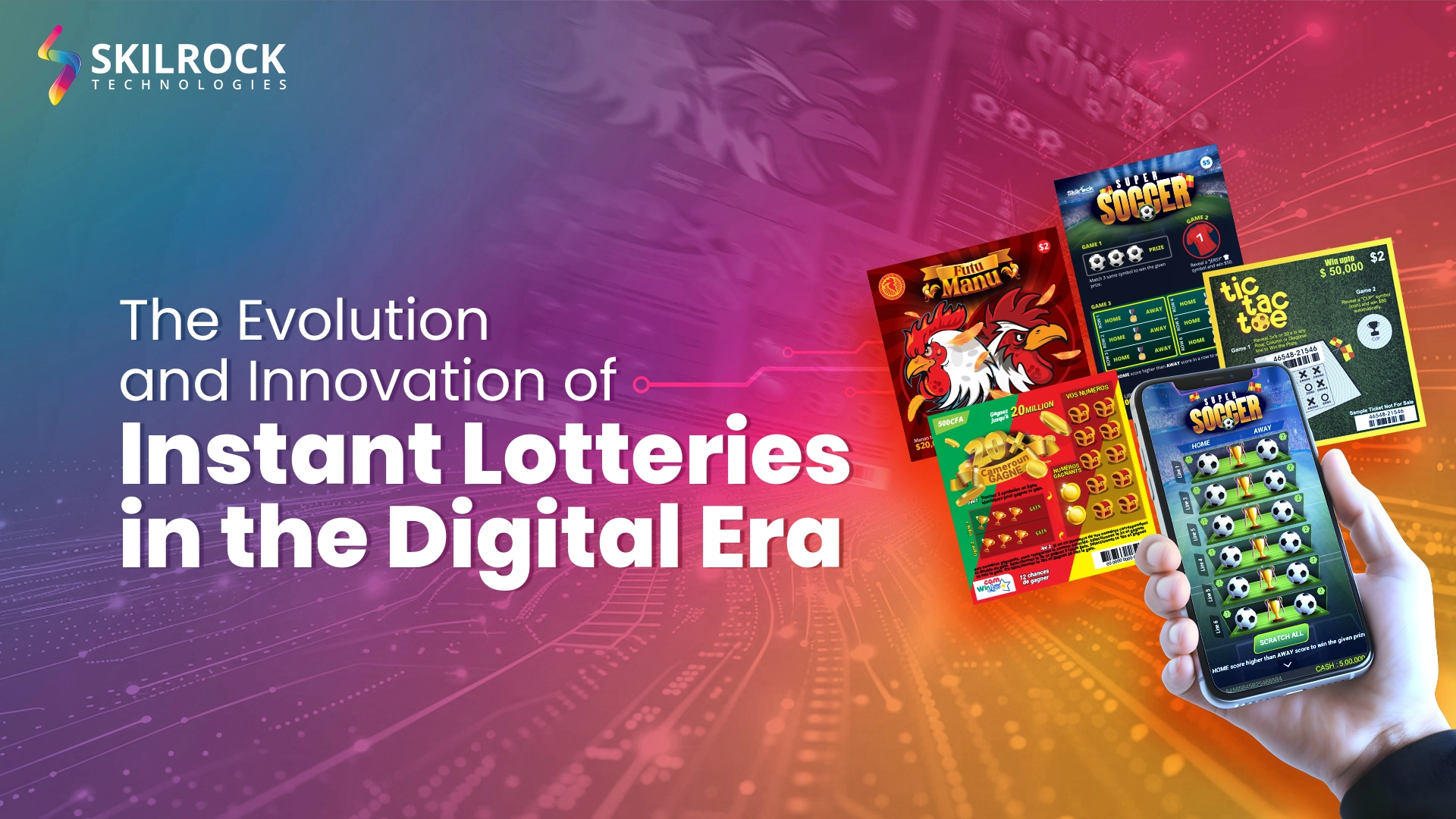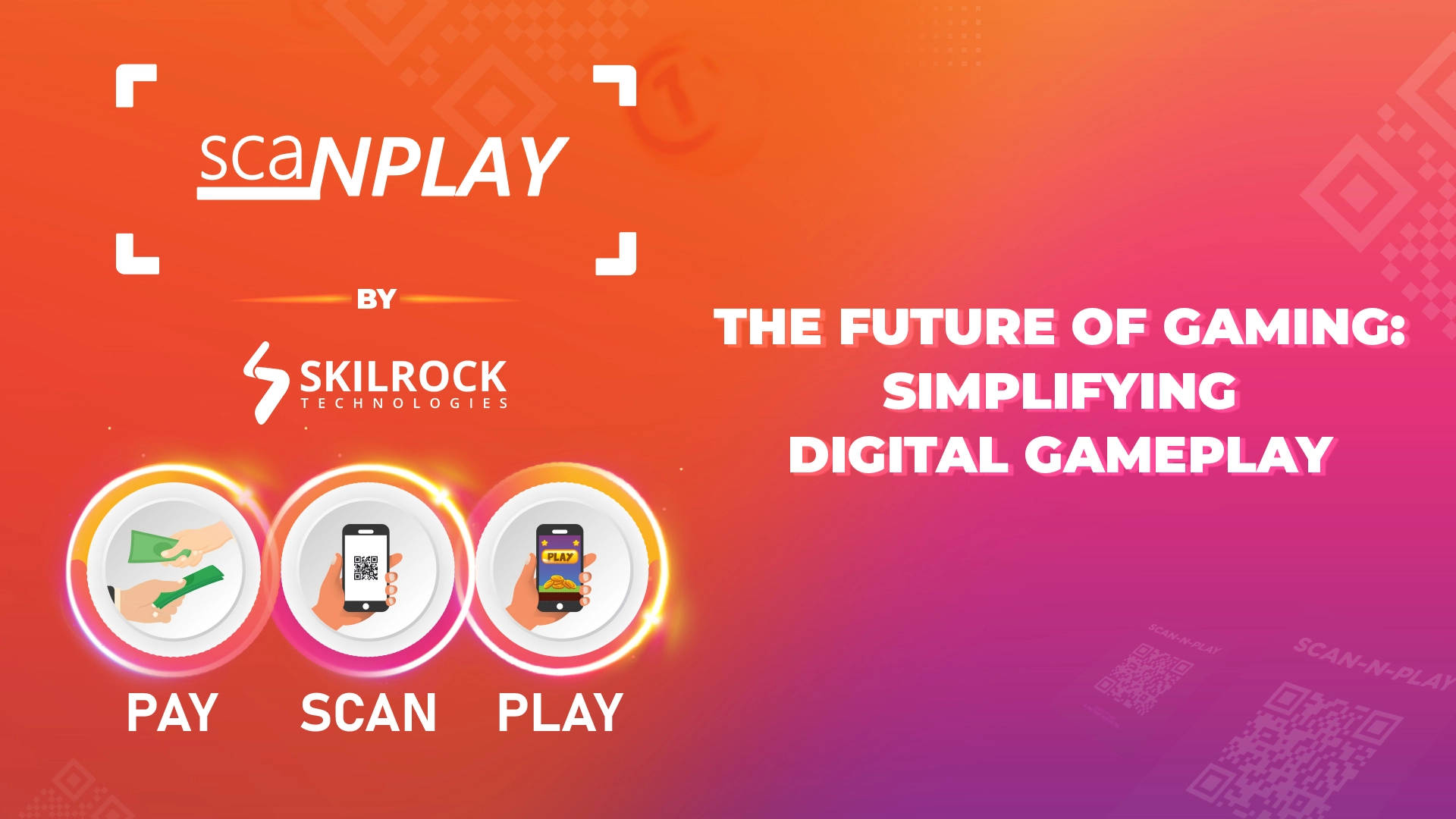Evolve, Unify, Thrive: LatAm Gaming Evolution
The Latin American gaming market is experiencing a dynamic transformation, fueled by the rapid growth of online and mobile gaming. This comprehensive analysis delves into the various aspects driving this evolution and the strategies operators must adopt to thrive in this rapidly changing landscape. Alongside this, it will also touch upon the regional and traditional affinity that the people of this region have and how it impacts the offerings.
The Digital Surge: Tackling Online and Mobile Gaming Growth in LatAm
The Latin American gaming market is experiencing rapid growth, with the proliferation of smartphone subscriptions forecasted to reach nearly 700 million by 2029, up from 600 million in 2023, contributing significantly to online and mobile gaming surge in the region. With ease of accessibility, the demand for mobile-friendly gaming continues to grow. Operators, hence, need to focus on developing user-friendly apps and websites that cater to the preferences of mobile users. This involves optimising interfaces for smaller screens, ensuring quick load times, and providing secure and seamless gaming experiences.
The convenience of mobile gaming allows players to engage in their favourite games anytime and anywhere, making it an attractive option for busy lifestyles. Furthermore, the COVID-19 pandemic accelerated the shift towards digital gaming, as lockdowns and social distancing measures limited access to physical gaming venues. As a result, the digital gaming sector saw unprecedented growth, prompting operators to invest heavily in digital platforms to meet the rising demand.
LatAm Market Trends: Opportunities and Challenges in Retail Gaming
In several countries in Latin America, street vendors and door-to-door salespeople compose the larger part of the retail network; this is another of the distinguishing features of the regional market. As a consequence of broader political and social change in the region, the pace of modernization of Latin America’s lotteries has recently accelerated, as a culmination of a decades long reorientation of perspective across the entire sector. Whereas historically lotteries gaming in Latin America have been viewed through a prism of social regulation, they are now largely treated from a perspective of private sector commerce, as businesses in their own right. Many of the region’s lotteries and sports betting operators are now aggressively modernizing the product portfolios, retail networks, and operations in general. For example, Mexico introduced fundamental structural changes in 2022, culminating in the fusion of Pronósticos para la Asistencia Pública with Lotería Nacional para la Asistencia Pública (LNAP). Brazil, often referred to as the "sleeping giant," has a large population and expansive landmass, making it a prime target for both retail and digital gambling. However, the country's regulatory environment is still evolving. Colombia stands out as a model for iGaming growth in the region, with comprehensive legislation introduced in 2016 and a significant increase in gambling-related activities since then.
While the digital gaming market is booming, retail gaming remains a significant part of the Latin American gaming landscape. Retail gaming venues, such as casinos and betting shops, offer a social experience that is difficult for digital platforms to replicate. However, operators face several challenges in maintaining a robust retail presence while expanding their digital offerings.
One of the primary challenges is navigating the complex regulatory environment in various Latin American countries. Each country has its own set of regulations governing the gaming industry, which can create hurdles for operators looking to expand their retail operations. Staying compliant with these regulations while offering a diverse range of gaming options requires careful planning and strategic investments.
Despite these challenges, there are numerous opportunities for growth in the retail gaming sector. Operators can capitalize on the popularity of traditional games, such as bingo and lotteries, which have a strong cultural significance in many Latin American countries. Additionally, modernizing retail gaming venues by incorporating digital technologies can enhance the overall gaming experience and attract a broader audience.
To succeed in the evolving Latin American gaming market, operators need to adopt best practices and innovative strategies. Leveraging data analytics is crucial for understanding player behaviour and preferences. By analyzing data collected from various touchpoints, operators can gain valuable insights into what drives player engagement and tailor their offerings accordingly. Targeted marketing campaigns can also help attract and retain players. Personalizing marketing messages based on player data can increase the effectiveness of promotional efforts and enhance player loyalty. For example, Skilrock's comprehensive marketing services utilize advanced analytics to craft tailored campaigns that resonate with diverse player segments, enhancing both loyalty and engagement.
Investing in technology to improve the gaming experience is equally essential. This includes developing high-quality graphics, immersive sound effects, and interactive features that keep players engaged. Skilrock's expertise in technology and gaming solutions ensures that operators can provide an engaging, visually appealing, and seamless experience for their players, helping them stay ahead in a competitive market.
Modernizing the retail channel is vital for sustaining growth in the Latin American gaming market. Upgrading gaming machines, enhancing the ambience of retail gaming venues, and integrating digital technologies to provide a cohesive gaming experience are critical steps. Enhancing the physical environment of gaming venues makes them more appealing to players, encouraging repeat visits. Incorporating digital elements into retail gaming can also enhance the overall experience. For example, using touchscreens and interactive displays can provide players with additional information about games and promotions. Additionally, implementing cashless payment systems can streamline transactions and reduce waiting times, improving overall player satisfaction.
Efficient inventory management and supply chain optimization are critical for maintaining a steady flow of gaming products and services. Operators must implement robust supply chain strategies to ensure timely delivery and minimize disruptions. This involves working closely with suppliers, monitoring inventory levels, and using data analytics to forecast demand accurately. Optimizing the supply chain also requires collaboration with various stakeholders, including manufacturers, distributors, and retailers. By establishing strong partnerships and communication channels, operators can create a more efficient and responsive supply chain. This not only ensures that gaming products are available when needed but also reduces costs and enhances overall operational efficiency.
Embracing Omnichannel Evolution: Navigating the Future of Lottery
The future of lottery gaming lies in embracing omnichannel strategies. An omnichannel approach ensures that players can enjoy a seamless gaming experience whether they choose to play online, through mobile apps, or at retail locations. Integrating online and offline channels enhances accessibility and convenience for players, providing them with multiple options to participate in lottery games.
For operators, implementing an omnichannel strategy involves creating a unified gaming ecosystem. This means that players should be able to use a single wallet for all transactions, enjoy consistent promotions across channels, and receive personalized recommendations based on their gaming history. By offering a cohesive and integrated experience, operators can increase player engagement and loyalty. Skilrock's Scan-N-Play offering exemplifies this approach by enabling players to switch between online and offline gaming seamlessly. With features like no registration required, enhanced player privacy, and diverse game options, Scan-N-Play makes gaming more accessible and enjoyable for players. Operators can leverage Skilrock's technology to provide a modern, engaging, and secure gaming experience across all channels.
A seamless player experience is paramount for retaining customers in the competitive Latin American gaming market. Operators must focus on creating intuitive and user-friendly platforms that make it easy for players to navigate and enjoy their favorite games. This includes offering quick and secure payment options, providing responsive customer support, and ensuring that the gaming platform is accessible across various devices. Enhancing the player experience also involves addressing technical issues promptly and continuously improving the platform based on player feedback. By prioritizing the needs and preferences of players, operators can build strong relationships and foster long-term loyalty.
Integrating online and offline channels involves creating a unified gaming experience that transcends traditional boundaries. This means ensuring that players have a consistent and enjoyable experience, regardless of whether they are playing on a mobile app, website, or at a retail location. By providing a seamless transition between channels, operators can enhance player satisfaction and engagement. For instance, players should be able to start a game on their mobile device and continue playing it on a desktop or at a retail location without any disruptions. Additionally, offering synchronized rewards and promotions across channels can encourage players to participate in multiple gaming activities. By creating a cohesive and interconnected gaming ecosystem, operators can cater to the diverse preferences of players.
Single-wallet solutions and unified player accounts simplify the gaming experience by allowing players to manage their funds easily across different platforms. This eliminates the need for players to maintain multiple accounts or wallets, reducing complexity and enhancing convenience. With a single-wallet solution, players can seamlessly transition between online and offline gaming, making it easier for them to engage with different gaming activities. Unified player accounts also enable operators to provide personalized experiences based on individual player data. By tracking player activities across various channels, operators can offer tailored recommendations, promotions, and rewards that resonate with each player's preferences. This level of personalization can increase player satisfaction and foster loyalty.
To engage and retain players effectively, operators should adopt a channel-agnostic approach. This involves offering consistent experiences and rewards, regardless of the channel players choose to use. By providing a unified and cohesive experience, operators can ensure that players feel valued and appreciated, regardless of how they engage with the gaming platform. A channel-agnostic approach also involves creating marketing campaigns and promotions that appeal to players across different channels. For example, operators can offer cross-channel promotions that incentivize players to participate in both online and offline gaming activities. By fostering a sense of continuity and integration, operators can enhance player engagement and retention.
The Psychology of Play
Understanding the psychology of play is crucial for developing engaging and compelling games. The average age of players in the region is 39 years old, with a growing number of younger players, particularly from Generation Z, entering the market. Stakeholders must explore player motivations and behaviours to create games that resonate with different demographics. This involves studying factors such as player preferences, emotional triggers, and cognitive biases that influence gaming behaviour.
For example, game designs can incorporate elements of competition, achievement, and social interaction to appeal to players' intrinsic motivations. Additionally, offering a variety of game themes and mechanics can cater to diverse player interests and preferences. By tapping into the psychological aspects of play, operators can create more immersive and enjoyable gaming experiences.
Capturing the interest of new-generation players requires a focus on accessibility and comfort. Approximately 70% of new-generation players in Latin America prefer using mobile apps for their gaming activities due to the convenience and flexibility they offer. New-gen players often prefer innovative and visually appealing game designs that offer unique and exciting experiences. Hence, creating games that are easy to learn and play, ensuring that they are accessible to players with varying levels of experience should be prioritized.
Additionally, optimizing gaming platforms for different devices and providing multiple language options can enhance accessibility and comfort for new-gen players. By catering to the preferences and needs of this demographic, operators can attract a younger audience and drive long-term growth.
Regional Insights
Different countries within Latin America have unique gaming trends and preferences. Operators should tailor their strategies to fit local markets, incorporating regional insights into game development and marketing efforts. This involves understanding the cultural, economic, and regulatory factors that influence gaming behaviour in each country.
For example, some countries may have a strong preference for traditional lottery games, while others may favour digital and instant-win games. By customizing offerings to reflect local preferences, player engagement and satisfaction can be enhanced. Additionally, collaborating with local partners and stakeholders can provide valuable insights and help operators navigate regional challenges effectively.
Customization and localization are key to resonating with players in the Latin American gaming market. Operators should develop games that reflect local culture, languages, and preferences, ensuring a personalized gaming experience that appeals to regional audiences. This involves incorporating local themes, symbols, and narratives into game designs to create a sense of familiarity and connection.
Localization also extends to marketing and promotional efforts. By tailoring marketing messages to reflect local customs and values, operators can create more effective and impactful campaigns. Additionally, offering customer support in local languages can enhance player satisfaction and build trust.
Conclusion
The Latin American gaming market is poised for continued growth and transformation. By embracing the digital surge, modernizing retail channels, and adopting omnichannel strategies, operators can navigate the evolving landscape and capitalize on emerging opportunities. Understanding player motivations, leveraging data analytics, and prioritizing seamless player experiences are crucial for maintaining a competitive edge.
Additionally, stakeholders can gain valuable insights and industry knowledge by participating in key events such as the Skilrock-sponsored webinar on "Evolve, Unify, Thrive: LatAm Gaming Evolution" on December 3rd at 11 AM ART. This webinar will be moderated by Executive Director of CIBALAE! If this interests you, CLICK HERE to register!


 English
English

 Spanish
Spanish
 Portuguese
Portuguese












